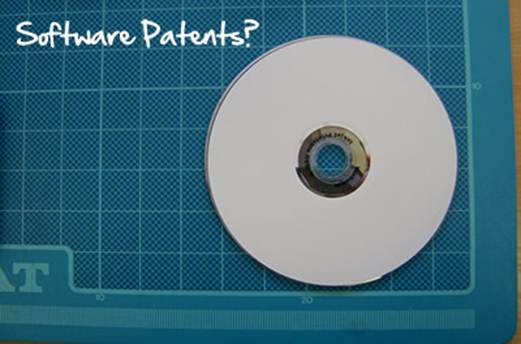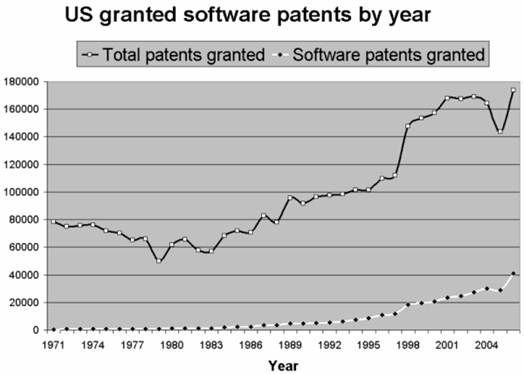This question has long been the
subject of debate. Patent wars are being waged by large IT companies valued at
billions of dollars, with no sign of ending.
John of Utynarn had an idea, and the idea
was so good that the King of England himself had its rights protected. This
glass maker had invented a method for manufacturing window glass for the
British college of Eton. Henry VI awarded him with 20 years of monopoly rights
for this technology in 1449. In return, John was only allowed to impart his
techniques to people born in England. This moment in history is recognised as
the first English patent awarded.

Can
software be patented?
It was obvious that, from here on, John of
Utynarn laid the groundwork for what that will become the granting of patent
rights. Today, the same thing applies to millions of patents worldwide. The
computer age began 500 years after John received his patent, which begs the
question: can software be patented? Till today, the answer to this is vague.
The 26th of May 1981 is considered an
important date in the USA. This was the day when programmer-attourney Satya Pal
Asija received patent protection for his program, "Swift-Answer". He
had written this software in 1969 itself, but became an attorney when he
couldn't get a patent for his software. It became the first ever software
patent granted in the USA.
Trivial Patents are stifling innovation
and restricting economy
Nevertheless, the USA remains a hotspot for
the most number of patent disputes. Starting from the 70s, we keep seeing a
succession of patent processes, approvals and appeals. The complicated history
of judgments delivered in such cases makes it difficult for the situation to
become any clearer. The fine line of justice, in this case, is a zigzagging
mess. Recently, the US Supreme Court made it admissible for software patents to
be granted, but it did little to clarify the actual conditions that are
necessary for such patents to be granted. The line, it seems, is barely
straightened.

graph
of software patents, 1971 - 2005
The situation in Europe is similarly
confusing. The European Patent Agreement from the 70s says that programs
written for data processing are to be excluded from patent protection, "as
such". The only thing is what does "as such" mean? The European
Patent Office ruled in 1998 that software has to result in a "further
technical effect" in order to be eligible for a patent, which means that
it has to have an effect beyond the mere "working" or
"functioning" on the computer. In 2005, the European Parliament
refused to attempt to make the rules somewhat clearer. Critics had complained
against the guidelines, saying that they ought to have allowed the entire
gamut, type and library of software to be patented.
There is, however, another argument from
the left wing pertaining to the act of software-patenting. A number of critics
opine that patents may have a restrictive effect on software development,
further innovation and also its related economy. They claim that open sourced
programs are a better practice (in reality, larger IT firms are the ones
championing the cause of software patents), which allows for better and more
widely available software. Critics are also upset by the fact that trivial
patents are granted for even the most widely distributed or commonly used
programs. For example, in the USA alone, Apple has a patent for the automatic
updating of a software, while Microsoft has a patent for scrolling pages, as
well as the "double-clicking". Adobe has a patent for
"Tabs" -- multiple windows integrated into one, and IBM recounted
that it received a patent for the "thickness of lines".
Adobe's patent is active in both the US and
the EU. In reality, patents are not granted in a uniform fashion. Amazon
established another route by patenting its "1-Click-Buy" feature in
the USA, but not in the Europe. In this case, the patent applies to a purchase
wagon or trolley in the Internet, and also a graphical Progress Bar. These
peculiar examples are a contrast to patents like Microsoft's FAT file system,
which validity was corroborated by the Federal Court of Justice in 2010.

Android
patient licensing and litigation
Large IT firms continue to argue that
copyright protection is not enough, as it only protects the development of the
software -- which means that only the source code is protected, but not the
idea. In a nutshell, this is concerns a huge amount of money. It explains how
patents for the MP3 standard held by the Fraunhofer Institute, earns hundreds
of million Euros for the company every year. Patents are, first and foremost,
the ammunition for IT companies to fight their battles. One such battle is
primed for action in San Francisco, where it has to be decided if Google will be
paying a huge amount of fine to Oracle for infringing its patents on the
Android operating system. Facebook, too, recently invested billions by
purchasing IBM and AOL patents. We neglected to mention Google's 12
billion-dollar for Motorola Mobility. These deals are made for one specific
purpose: a patent war is looming, and these IT companies are preparing
themselves. And this war isn't just going to be waged amongst themselves. There
is also another combatant in the fields. IT "Trolls" are companies
that hoard a vast number of patents, much like actual mythical cave trolls with
treasure. They do so with no intention of converting these patents into
products. Rather, they intend to resort to the law for claiming huge amounts of
damages when any of these patents are infringed by another. In the USA, over
$80 billion were claimed as such damages in 2010 alone.